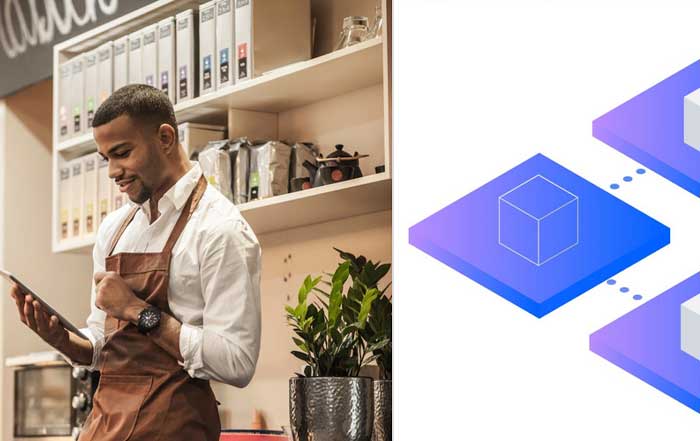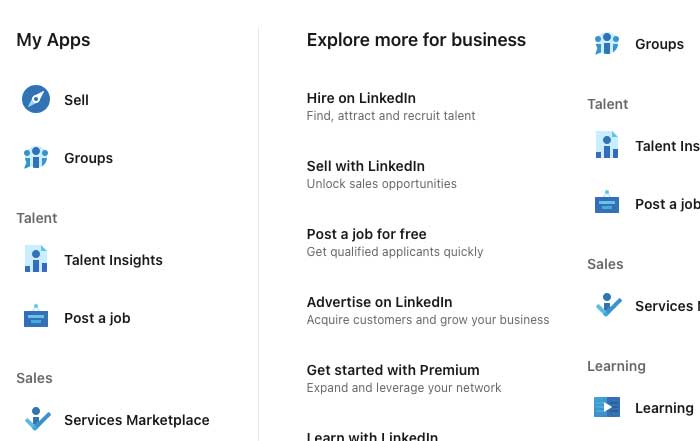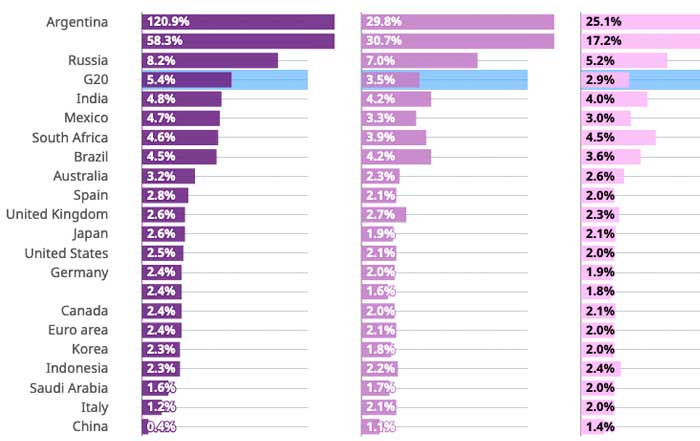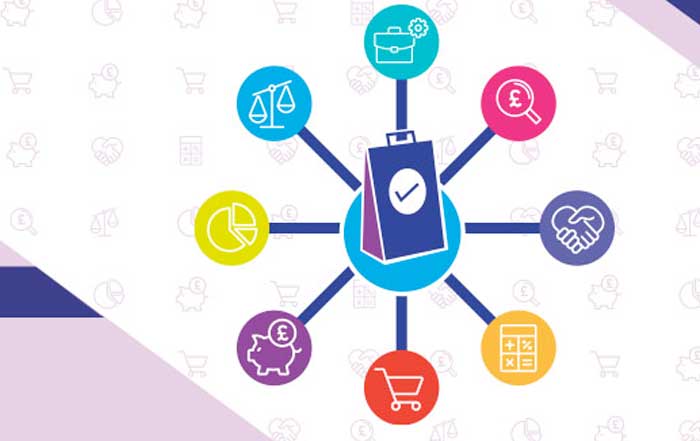Artificial intelligence stands at the forefront of business innovation in 2025, continually reshaping the ways in which companies interact with and serve their customers. Corporate leaders and technology experts alike are directing substantial resources toward AI-enabled systems that promise faster, more dynamic, and more efficient solutions for a broad array of customer service demands. Since data has emerged as a strategic asset and digital platforms have turned into virtual front doors for commerce, businesses are increasingly motivated to harness machine learning, natural language processing, and advanced analytics to meet escalating consumer expectations. These investments not only modernize essential operations but also chart new pathways for competitive advantage, as organizations tailor their products and services more precisely than ever before.
The influence of AI on customer experience has rapidly broadened from experimental pilots to full-scale deployments. Initial skepticism centered around concerns of cost, complexity, and integration. Now, however, industries ranging from finance and retail to healthcare and entertainment have witnessed tangible results in the form of reduced wait times, more accurate product recommendations, and the availability of services around the clock. Companies that successfully deploy AI solutions often highlight more cohesive omnichannel strategies and enhanced personalization as among the major upsides. Beyond the quest for greater operational efficiency, many organizations have discovered that AI can strengthen customer loyalty by providing not just sporadic, generic assistance but a more profound, data-informed engagement tailored to the unique context of each consumer.
Even with recent breakthroughs in AI, machine capabilities are steadily expanding further. By taking advantage of deep learning algorithms that continually refine their predictions, companies now rely on these systems to interpret customer inputs with increasing nuance. Patterns and trends that might have gone unnoticed through manual examination are brought to the surface, translating into more relevant product launches and service improvements. These capabilities accelerate the rate at which enterprises can adjust their offers, align marketing strategies with customer preferences, and reduce friction across numerous consumer touchpoints. The outcome is a dynamic and responsive ecosystem that benefits both the customer—who encounters fewer hurdles—and the business, which can more accurately fulfill emerging market needs.
The Pursuit of Personalization at Scale
Personalization has evolved from a superficial marketing technique into a fundamental driver of business growth, and artificial intelligence has made it possible to achieve a level of personalization that would have been unattainable through purely manual methods. Enterprises seeking to differentiate themselves in saturated markets are dedicated to crafting one-to-one customer journeys, and advanced analytics now provide the backbone for segmenting audiences down to the individual level. The sophistication lies in assembling real-time data from myriad sources, such as mobile application usage, web browsing histories, in-store purchase patterns, and social media engagement, then synthesizing these sources to present uniquely tailored offers, content, and communications.
Organizations in the retail sector, for instance, leverage AI-powered recommendation engines that serve up product suggestions with astounding accuracy. These engines learn from each click, purchase, and search query, adjusting their algorithms to refine predictions and provide more relevant product matches over time. Financial services companies use AI-driven tools to analyze personal spending habits, lifestyle preferences, and predictive credit risk measures to suggest banking products or insurance packages that address individualized needs. Meanwhile, telecommunications providers have improved user retention by predicting churn behavior and then proactively offering exclusive deals or upgrades that align with the customer’s interests.
A core advantage of such hyper-personalization is the capacity to move beyond trivial brand interactions into deeply resonant relationships, paving the way for sustained loyalty. Rather than bombarding consumers with promotions unrelated to their interests or sending generic messages that get lost amidst countless digital stimuli, businesses can craft targeted campaigns that feel organic and meaningful to recipients. The subtlety of these personalized approaches results in fewer unsubscribes, a lower likelihood of brand fatigue, and an increase in customer satisfaction ratings. In a marketplace where customers can switch brands instantly, these AI-backed custom experiences become powerful differentiators, especially for companies that aim to develop trust and rapport over time.
However, personalization at scale introduces a set of unique challenges. The data troves necessary for intelligent personalization require secure storage, robust privacy protections, and a nimble analytical infrastructure that can quickly process massive volumes of information. Continuous advancements in data warehousing and edge computing solutions help streamline these processes, but they also demand substantial financial and strategic commitment. Businesses must walk a fine line between leveraging customer data to enrich experiences and respecting boundaries related to data sharing, transparency, and user consent. As organizations expand their personalization initiatives, they are forced to tackle these complexities with carefully structured governance to ensure that convenience and respect for user privacy remain in equilibrium.
Advanced Chatbots and Conversational AI
The days when automated chatbots could only provide scripted, simplistic responses to customer queries are long gone. AI-powered chatbots are now a crucial part of modern communication strategies, offering immediate, context-aware interactions across websites, messaging apps, and voice assistants. Companies that integrate these chatbot solutions benefit not just from reduced operational costs, but also from the capacity to offer uninterrupted service, thereby meeting the round-the-clock demands of global customers. By integrating natural language understanding modules, chatbots can interpret queries in various forms, detect sentiment, and route complex issues to human representatives only when a higher level of support is required.
A notable advantage emerges in the ability of chatbots to continuously learn from each exchange, honing their language models and response strategies over time. Whenever a new question surfaces, advanced systems analyze context and pattern to generate an even more accurate response, thereby continuously refining the overall customer experience. Many forward-looking companies implement A/B testing on their conversational flows, gathering data on customer satisfaction, average handle time, and the frequency of escalations. These insights are then used to retrain models, eliminating bottlenecks and refining the automated support process even further.
Beyond customer support, conversational AI in 2025 often handles tasks spanning lead qualification, upselling opportunities, and simple troubleshooting. A retail chatbot might proactively suggest items to match a recent purchase or outline the best discount available to a particular user segment. A tech support chatbot could walk customers through a series of diagnostic steps based on the device they own, significantly reducing the need for lengthy calls and repeated problem descriptions. In environments where large teams operate call centers, AI-enhanced chatbots also reduce the pressure on human agents, enabling them to focus on more sophisticated tasks that require empathy or complex judgment.
Despite the potential for remarkable efficiency gains, deploying AI-driven chatbots is not without its obstacles. Organizations must carefully engineer these systems to recognize when a user’s request exceeds their current capabilities, seamlessly transitioning to a human agent rather than frustrating the customer with irrelevant responses. Additionally, the design of chatbot personas can affect user perception of the entire brand. Chatbots that communicate in a lifeless or overly robotic manner run the risk of alienating users, while those that strike a more natural tone can create a positive impression. Striking the right balance between automation and human interaction remains a critical factor for success.
Predictive Analytics and Proactive Customer Engagement
Customer service no longer centers around reacting to complaints; in many companies, the focus has shifted to anticipating needs and resolving issues before they escalate. Predictive analytics harness historical data and real-time inputs to foresee patterns, identify anomalies, and flag potential disruptions. Retailers, for example, might analyze purchase history, seasonal trends, and even web traffic spikes to anticipate stock shortages in certain regions. By running these forecasts through AI models, an organization can automatically trigger notifications or promotional offers that keep customers informed and encourage them to take advantage of special deals before supplies run low.
In the travel industry, predictive analytics help companies detect early signs of dissatisfaction. Algorithms analyze booking data, loyalty program interactions, and social media feedback to sense looming problems, such as flight delays or repeated negative mentions about a particular route. Once these signals are identified, customer service teams can proactively reach out with suitable rebooking arrangements or upgrades, thus safeguarding the relationship by demonstrating an attentive, solution-focused approach. Similarly, subscription services harness predictive tools to determine the likelihood of cancellation, and can then offer incentives or make subscription adjustments to maintain customer loyalty.
Proactive engagement not only reduces churn but also enhances the brand’s reputation for reliability. In a climate where consumer patience is thin, businesses that detect and resolve issues early convey an image of competence and foresight. Moreover, predictive analytics refine marketing efforts by helping organizations identify the ideal time to send communications, the most appropriate channel to use, and the best type of offer to extend. Engagement strategies become more personalized and less intrusive, as data models can indicate which content will most likely resonate with a particular demographic. The result is a more harmonious relationship where promotions are relevant, brand interactions are seamless, and customers feel valued for their loyalty.
Despite these advantages, building predictive capabilities typically demands robust data pipelines, advanced algorithmic expertise, and a collaborative mindset across departments. Multiple data sets from marketing, sales, supply chain, and customer service must be harmonized, which can sometimes surface cultural or organizational barriers to data sharing. Companies that excel in predictive analytics often attribute their success to an internal culture that treats data as an asset accessible to all relevant stakeholders. Additionally, they invest in best-in-class infrastructure, either through cloud-based solutions or hybrid approaches, to ensure scalability and adaptability as predictive models become more sophisticated. These efforts position organizations to react quickly to market fluctuations and ultimately deliver more meaningful experiences.
Emotional AI and Enhanced Empathy
While much of the conversation around AI emphasizes efficiency, advanced algorithms are also contributing to more empathetic, human-like interactions. Emotional AI, employing technologies such as sentiment analysis and facial recognition in some applications, aims to interpret subtle emotional cues that are difficult to capture through text analytics alone. Financial service providers may use sentiment analysis to tailor messaging according to whether a customer appears frustrated or anxious during a support session. Retailers can factor in a consumer’s emotional state, inferred from linguistic markers in chat interactions, to adjust tone or promotional approaches on the fly. In 2025, the accuracy of these models has increased substantially, making them suitable for real-time applications across various communication channels.
By gathering data on voice inflections, word choices, and even pacing of speech, AI can determine if a conversation is becoming tense or if a customer is losing interest, prompting a shift in strategy. Virtual call center agents equipped with emotional detection modules will cue human agents to intervene when a conversation shows signs of turning adversarial. In other scenarios, particularly those involving high-stakes discussions—such as loan applications or healthcare guidance—these insights help organizations demonstrate a greater sense of care and responsibility. The ultimate goal is not to replicate human empathy perfectly but to empower professionals with real-time analysis that allows them to address customers’ emotional states more effectively.
Critics, however, raise important concerns about the ethical and privacy implications of systems designed to interpret emotions. The technology’s potential misinterpretation or overreach can lead to uncomfortable situations and raise questions about transparency. Nonetheless, companies that carefully implement emotional AI tools with robust consent mechanisms and clear communication strategies often find that these capabilities enhance satisfaction scores and, in some cases, strengthen brand loyalty. Empathy can be considered a form of currency in a digital environment often criticized for impersonal or purely transactional interactions. Indeed, harnessing emotional AI responsibly can transform customer experience from a series of rote exchanges into a more meaningful dialogue.
AI-Assisted Decision Support for Agents
Although automation gains the most attention, there remains a significant focus on enhancing the abilities of human customer service agents rather than replacing them outright. Many enterprises deploy AI-driven decision support systems that provide agents with insights, recommended solutions, and real-time prompts based on data analytics. The result is a hybrid approach where technology augments human intuition rather than stifles it, creating a synergy that can be especially beneficial for addressing complex or sensitive inquiries. When a customer calls a tech support line, for example, the AI might quickly sift through the customer’s previous purchase history, service logs, and known device errors to offer a concise list of possible resolutions.
These systems go beyond simple knowledge bases, frequently incorporating predictive elements that help agents identify patterns that may not be obvious at first glance. By analyzing historical success rates of various solutions, AI can prioritize recommended paths for troubleshooting. The agent can then apply critical thinking or empathy to refine and deliver these recommendations in a way that best aligns with the customer’s specific circumstances. In industries like healthcare or legal services, where nuanced understanding is essential, this collaboration ensures that critical decisions are made with both the efficiency of data-backed analysis and the discernment of human oversight.
AI-assisted decision support also streamlines workflows by automating many of the repetitive tasks that weigh down customer service interactions. Agents no longer need to manually sift through complicated CRM systems or multiple software platforms to find relevant information; the AI collates and surfaces key data points in an easy-to-digest format. This allows agents to focus on building rapport, resolving conflicts, and delivering specialized solutions that require creativity or contextual understanding. Enhanced job satisfaction can result, as support personnel feel more equipped and less burdened by tedious processes. Over time, companies that invest in robust AI decision support often see reductions in handling times and improvements in key performance indicators such as first-call resolution rates and overall customer sentiment.
Integration Across Omnichannel Environments
An omnichannel strategy ensures that a business delivers a cohesive customer experience whether interactions occur via a website, mobile app, physical store, or social media channel. AI serves as the connective tissue that gathers data from multiple touchpoints, analyzes user behavior, and orchestrates consistent messaging. A customer who browses an online product catalog might receive a timely push notification on a mobile app highlighting a related discount, followed by an automated email reminding them of items left in their cart. If the same customer later visits a physical store, the sales associate—equipped with AI-driven analytics—might already have insight into their preferred styles or sizes.
Retailers, banks, and telecommunications firms invest heavily in this integrated approach to reduce friction and offer uninterrupted interactions, regardless of the channel. AI systems can unify user profiles so that past purchases, ongoing inquiries, and loyalty program details are readily accessible whenever a customer logs in or walks in. Even social media monitoring benefits from these capabilities, as advanced text analytics can detect brand mentions, gauge sentiment, and prompt an immediate response. The opportunity lies not simply in collecting data from all these sources, but in synthesizing it into an actionable intelligence layer that drives personalized marketing, timely support, and cross-channel consistency.
A vital element in realizing an effective omnichannel environment is the use of AI for real-time synchronization. High traffic volumes across channels can lead to data silos if not managed correctly, a situation that many organizations worked to address in earlier years. Current best practices involve adopting a unified data repository and employing APIs to ensure that information flows seamlessly between various systems. Machine learning models can detect duplications, reconcile conflicting records, and automatically flag inaccuracies, dramatically improving data hygiene. In turn, customers encounter fewer errors, receive consistent account updates, and are more likely to develop a favorable perception of the brand’s professionalism and efficiency.
This synchronized environment can lead to substantial gains in customer engagement. Someone browsing on a desktop can pick up right where they left off on a smartphone later, or speak with a customer service representative who is already aware of their prior browsing history. The synergy between AI and omnichannel integration transforms what used to be disjointed, channel-specific interactions into a continuous conversation. Ultimately, businesses that implement these strategies effectively find that loyalty programs become more influential, upselling potential increases, and customer satisfaction grows, thanks to frictionless transitions and consistently relevant messaging across every platform.
Real-World Industry Applications
Almost every industry has found a unique way to leverage AI for enhanced customer experiences. In the hospitality sector, hotels and resorts incorporate AI-powered recommendation engines to suggest customized amenities or local attractions, informed by the guest’s preferences and travel history. High-end establishments use sophisticated chatbots not only for booking inquiries but also for post-checkout engagement, encouraging guests to share feedback and revisit the establishment. Some chains even merge AI with Internet of Things (IoT) devices, automatically adjusting in-room temperature or lighting based on the guest’s comfort preferences. Through these automated touchpoints, customer service moves beyond the basic function of addressing concerns and evolves into proactively orchestrating memorable experiences that cultivate future visits.
Airlines and airports have also adopted AI strategies to create smoother journeys for travelers. Flight boards, mobile apps, and kiosk systems harness predictive algorithms to advise passengers on ideal arrival times, gate changes, or potential weather delays. Further down the chain, baggage handling systems use AI-driven robotics and routing analytics to reduce instances of lost luggage, while chatbots offer real-time rebooking assistance for missed connections. This holistic approach has led to improvements in on-time performance scores and a decrease in customer complaints, as travelers benefit from greater transparency and increased control over their itineraries.
Retailers in the apparel industry employ AI-driven visual search tools that allow customers to upload photos of desired items, immediately discovering matching or similar products from the brand’s catalog. This technology streamlines the path from inspiration to purchase, catering to modern consumers who crave efficiency and immediate gratification. At the same time, it cuts down on returns by ensuring that shoppers find items that genuinely align with their preferences. Grocery outlets, meanwhile, use AI to manage inventories and deliver curated shopping lists, factoring in dietary restrictions, budget constraints, and prior shopping history.
In professional services, AI-based client portals can expedite information-sharing and automate follow-up tasks, giving clients the ability to access real-time project updates without needing to contact their account manager. Consulting firms utilize data analytics to identify patterns in client inquiries, shaping their service offerings to address emerging market trends faster. In educational technology, platforms integrate AI-driven tutoring systems that respond to student inputs with personalized lesson plans and supplemental materials. All of these examples point to the central role AI has taken in refining how companies engage with their audiences, ensuring that products and services are not only high-quality but also agile enough to evolve alongside shifting demands.
Overcoming Technical and Organizational Barriers
Although AI holds considerable promise, implementing these systems for customer experience improvements can be complicated by a variety of hurdles. Technical complexities are frequently encountered when integrating AI solutions with legacy infrastructure. Older systems may not support real-time data streams or might lack APIs for seamless interoperability. Consequently, many firms undertaking AI transformation first address modernization efforts—upgrading their data warehouses, adopting microservices architectures, or migrating certain operations to the cloud—to build a flexible foundation that can accommodate large-scale machine learning models.
Organizational readiness also plays an important part in ensuring the success of AI initiatives. Cross-functional collaboration between technology teams, marketing professionals, and front-line service managers must be coordinated to define shared objectives and measurable outcomes. Without alignment, AI implementations may remain siloed proofs of concept rather than integrated solutions driving measurable business impact. Stakeholders need to be convinced of AI’s value, so thorough communication, training, and demonstration of concrete benefits are critical. Human resource departments, meanwhile, might consider developing new roles such as “AI Experience Architect” or “Conversational Designer” to ensure that technical solutions align with brand voice and customer expectations.
Resistance to change is another typical challenge. Some employees may fear that AI tools will displace their roles, while others might be skeptical about adopting new workflows. Successful organizations often invest in upskilling programs that clarify the symbiotic nature of AI-assisted processes, emphasizing how technology can free employees from repetitive or mundane tasks, thereby granting them the freedom to focus on relationship-building, problem-solving, and creative strategy. Over time, these efforts can help reduce skepticism, foster an environment open to experimentation, and drive broader acceptance of AI.
Budget constraints can further complicate adoption, particularly for small and mid-sized enterprises. Data labeling, algorithm development, and ongoing model maintenance may require substantial capital. However, open-source frameworks and pay-as-you-go cloud platforms have emerged to reduce the barrier of entry for smaller players. Pilot programs and incremental rollouts can also help organizations gauge the impact and refine their strategies before committing to large-scale implementations. Those that tackle these hurdles effectively find that the resulting gains in efficiency, customer satisfaction, and competitive differentiation are well worth the initial complexity.
Data Privacy and Ethical Considerations
The massive volumes of data fueling AI in 2025 raise significant ethical questions that businesses must address carefully to preserve trust. Customers today are acutely aware of how personal information can be collected, analyzed, and exploited, making transparent data handling procedures a key component of any AI initiative. Many regions have introduced updated regulations that require companies to clearly articulate how data is stored, processed, and used for AI-driven decision-making. Non-compliance can expose organizations to reputational damage and legal repercussions, especially in sensitive industries like healthcare or finance.
To maintain customer confidence, best-in-class companies adopt a privacy-by-design approach, embedding data protection measures into every stage of AI system development. Encryption of personally identifiable information, limitations on data retention, and protocols for secure data sharing among partners are considered essential. The stakes are high, because an organization that experiences a data breach risks eroding years of customer goodwill and brand loyalty. Ethical frameworks guide the responsible use of AI as well, particularly when it comes to algorithms that impact lending decisions, insurance coverage, or critical healthcare interventions. Businesses that are transparent about the rationale behind automated decisions and provide channels for appeals or human review generally garner stronger customer trust.
Another ethical dimension involves the potential biases that can arise in AI models if the training data is not diverse or representative. Biased results can manifest in skewed recommendations, erroneous classifications, or even discriminatory patterns in how services are provided. Corporate leaders often implement protocols to detect and mitigate these issues, such as auditing algorithms at regular intervals or employing external experts to scrutinize the models for hidden biases. The significance of this effort lies not only in regulatory compliance but also in demonstrating the moral responsibility of building AI systems that serve the broadest possible audience without perpetuating unfair practices.
Despite the added complexity, businesses that handle these data and ethical considerations effectively can position themselves as industry leaders. Demonstrating a commitment to respecting individual rights and adhering to high ethical standards can differentiate a company in a crowded market. This is particularly relevant in customer experience, where trust and loyalty are often fragile. A robust ethical framework for AI will likely become an even greater competitive differentiator in the coming years, as consumers continue to scrutinize how their personal data and digital behaviors are harnessed.
Ongoing Evolution in Natural Language Processing
Natural Language Processing (NLP) has advanced significantly, allowing businesses to decode not only customer queries but also the underlying intentions and emotions. Cutting-edge NLP models can parse idiomatic expressions, colloquialisms, and multiple languages with accuracy that approaches that of a skilled linguist. Customer-facing platforms now apply NLP capabilities for real-time language translation, bridging communication gaps that once hampered international commerce. Text analytics platforms capable of summarizing lengthy emails or extracting key sentiment indicators from social media posts also feed seamlessly into enterprise CRM systems, alerting service representatives about urgent needs or negative feedback.
NLP’s contributions extend beyond simple text interpretation to shaping the overall customer journey. A user might initiate a conversation with a voice assistant, switch to a text-based channel for more detailed input, and eventually consult in-person with a specialist. If NLP tools analyze all these interactions collectively, the brand can maintain a consistent understanding of the user’s needs throughout the different stages of communication. This holistic view not only expedites resolution times but also enhances the customer’s perception of brand responsiveness.
Companies are discovering innovative applications for NLP that go beyond direct customer support. Marketing departments can use topic modeling to understand trending themes in consumer discussions, effectively shaping upcoming campaigns. Human resources divisions might implement advanced NLP tools to gauge employee sentiment on internal platforms, gleaning insights for improving workplace culture. In the automotive world, voice-operated car dashboards rely on continuous NLP enhancements to offer integrated navigation and entertainment options that respond naturally to colloquial speech.
Despite these advances, NLP still struggles with certain complexities like context-shifting, irony, or cultural nuances. The technology is continually improving, with neural network architectures becoming more sophisticated and training data sets expanding in both quality and scale. The path ahead will likely see a steady blending of NLP with other AI specialties, from computer vision to emotional intelligence, paving the way for ever more refined interactions. Companies that invest in these combined technologies are well-positioned to delight customers through intuitive, context-aware engagements, solidifying brand loyalty in an increasingly multilingual and culturally diverse market.
Machine Learning in Customer Feedback Analysis
Customer feedback, whether expressed through online reviews, surveys, or direct communication, serves as a valuable resource for guiding product improvements and service refinement. Machine learning excels at extracting meaningful patterns from vast quantities of unstructured feedback, revealing insights that might remain hidden under a manual approach. Models designed for topic classification can categorize feedback into relevant themes—such as pricing, product quality, or delivery speed—providing product managers and marketers with a prioritized roadmap of areas needing attention.
In the automotive sector, for example, analyzing sensor data along with driver reviews helps manufacturers detect frequently encountered issues, whether they revolve around fuel efficiency or user interface design. By merging these findings with structured data on purchase trends and warranty claims, organizations can accelerate product enhancements and address pain points before they significantly erode satisfaction. Machine learning-based sentiment analysis also aids in ranking the urgency of specific complaints, helping service teams allocate resources more efficiently. This systematic approach ensures that serious product or service defects are resolved in a timely manner, effectively preventing minor problems from escalating into major brand crises.
Customer feedback analysis extends far beyond negative comments. Positive feedback offers a goldmine for understanding what resonates well in a brand’s offerings, shaping marketing messages that highlight these strengths. Furthermore, sentiment detection models can reveal new product usage contexts or customer demographics that might not have been part of the initial target audience. Machine learning clusters feedback from unexpected buyer segments, surfacing potential new markets or untapped revenue streams. By listening closely to the voice of the customer, businesses discover new avenues for growth and differentiate themselves in highly competitive arenas.
Yet, building and maintaining effective feedback analysis pipelines requires thorough planning. Data ingestion channels must be set up to capture feedback from multiple sources simultaneously, while data cleaning routines remove spam, noise, or irrelevant details. Once categorized and scored, these insights need to be integrated with operational processes so that relevant teams can take real-time or near real-time action. Automation can assist by routing high-priority issues directly to specialized teams or populating dashboards that leadership reviews daily. Over time, the combination of machine learning and proactive feedback management transforms raw customer voices into strategic intelligence that underpins product development, brand positioning, and long-term customer relationships.
AI Customer Experience Evolution Timeline
Autonomous Customer Journey Mapping
Customer journey mapping, traditionally undertaken by marketing and user experience professionals, has been elevated by AI into a more precise and automated discipline. Machine learning models can correlate large volumes of clickstream data, transaction records, and customer feedback to illustrate the myriad paths people take from their first touchpoint with a brand to a completed purchase or post-sales engagement. Businesses no longer rely on static diagrams that quickly become outdated; instead, they employ AI systems that automatically update these journey maps as user behavior shifts. This provides real-time insights into bottlenecks, points of drop-off, and opportunities to optimize conversion funnels.
Organizations in the subscription economy, for example, use AI to track whether a customer’s engagement with online content correlates with higher retention rates. If a drop in content usage often precedes subscription cancellations, automated alerts can trigger targeted outreach, offering personalized recommendations or incentives to re-engage. Similarly, e-commerce platforms can visualize exactly where in the checkout flow customers are most likely to abandon their carts, then experiment with interface changes or promotional messages to reduce these desertions. AI helps isolate whether the cause is a cumbersome payment process, unexpected shipping fees, or simply a lack of interest in recommended add-ons, enabling a more strategic response.
These dynamic maps also serve as a means of bridging departmental silos. Marketing teams might see that users respond well to email campaigns but drop off during the shipping phase, prompting supply chain managers to examine potential delivery problems. Conversely, an increase in returns might surface in the journey analysis, revealing a mismatch in product descriptions or sizing guides that merchandising teams need to address. By harnessing AI for continuous journey mapping, companies maintain a cohesive overview of customer behavior that unifies the goals of marketing, operations, customer service, and beyond.
Moreover, the insights gleaned from autonomous journey mapping can be used to fuel predictive modeling, such that organizations can identify early signs of frustration or reward brand advocates in a timely manner. Key performance indicators—like the Net Promoter Score—can be enriched with data from each journey segment, offering a nuanced, evolving view of customer satisfaction. This holistic perspective goes beyond correlating behaviors with outcomes, it illuminates why customers behave as they do, and guides how the brand should respond. Ultimately, automated journey mapping establishes a living blueprint of consumer engagement, enhancing responsiveness and paving the way for more refined experiences that align tightly with evolving expectations.
Resource Allocation and Cost Optimization
Efficiently allocating resources while still meeting customer expectations is a perpetual challenge, especially in industries with high customer traffic or complex service requirements. AI solutions offer real-time and forecast-based approaches that help businesses optimize staff schedules, inventory levels, and marketing budgets. Contact centers, for instance, deploy AI-enabled workforce management systems that analyze call volumes, average handling times, and even social media engagement data to predict how many agents are needed at specific times. This data-driven method prevents both overstaffing, which leads to wasted costs, and understaffing, which risks negative customer experiences due to longer wait times.
Inventory management systems in the retail and food service sectors also benefit from AI optimization. Machine learning algorithms incorporate factors like sales history, seasonal trends, and emerging customer preferences gleaned from social media data. By adjusting orders and distribution in near real-time, businesses minimize both stockouts and surplus inventory, saving on storage costs while ensuring that popular items remain available. For items with shorter shelf lives, such as perishable goods, predictive models reduce waste by pinpointing exactly when to reorder and in what quantities. This not only benefits profit margins but also aligns with broader sustainability goals.
Marketing teams similarly gain from AI-driven resource allocation, as sophisticated tools can identify the channels, messages, and audience segments that yield the highest return on investment. Instead of dividing budgets uniformly among platforms, businesses can dynamically redistribute funds to campaigns that generate higher engagement, conversions, or brand awareness. Real-time experimentation with AI-driven campaign optimization ensures that marketing efforts adapt quickly to changes in customer behavior. Moreover, granular monitoring of performance metrics allows organizations to pivot or refine strategies before large-scale spending occurs on underperforming initiatives.
In the context of cost optimization, AI also assists in automating routine tasks like data entry, ticket classification, and invoice processing. Natural language processing can extract relevant data fields from receipts or customer inquiries, eliminating manual errors and freeing employees to focus on value-added activities. The cumulative effect of these optimizations is significant: reduced operational overhead, a more agile workforce, and reinvestments in strategic growth areas. Resource allocation guided by AI thus becomes a cornerstone for balancing high-quality customer experience with sustainable business operations, enabling firms to adapt promptly to market disruptions and competitive pressures.
The Rise of Voice Commerce
Voice commerce, or the ability to search, browse, and purchase products through voice-based interfaces, has experienced rapid growth. With improvements in speech recognition accuracy and natural language understanding, consumers are increasingly comfortable issuing complex commands to virtual assistants. These voice platforms often include AI-powered personalization features, learning from previous interactions to refine product suggestions. Busy professionals might order groceries during a morning commute through a voice-enabled device, while households use smart speakers to reorder common items without the need to browse a website or pick up a phone. This frictionless experience puts convenience front and center, appealing to customer segments that value speed and hands-free interaction.
Retailers have adapted their online storefronts to accommodate voice-based queries, restructuring product data to ensure that voice assistants can easily parse item details. Brands that proactively optimize for voice search see improvements in both discoverability and conversion rates, as customers find relevant products quickly. Additionally, voice commerce allows for the integration of advanced features like recipe suggestions or interactive Q&A sessions about a product’s usage, bridging the gap between marketing and utility. Home appliance manufacturers might, for instance, embed a voice-enabled system that can recommend settings based on user habits, seamlessly connecting the product to a brand’s e-commerce platform for accessory purchases or upgrades.
However, businesses venturing into voice commerce must consider new sets of user experience principles. Consumers do not have the benefit of visually scanning multiple product listings, so product descriptions need to be succinct yet informative. Payment methods require foolproof security measures to ensure that transactions are authorized correctly through voice ID or other verification methods. Companies that excel in voice commerce invest in thorough user testing, aiming to reduce friction and confusion during the shopping process. Furthermore, they prioritize the integration of contextual data, such as a user’s location or purchase history, to deliver relevant results without inundating the conversation with needless prompts.
From a broader perspective, voice commerce also intersects with other emerging technologies. Some platforms combine voice with augmented reality experiences that help customers visualize a product in their living environment before making a purchase. Others leverage AI-based predictive models that anticipate reorders, prompting a voice notification at an opportune moment. This deeper convergence of voice interaction with AI-driven personalization, recommendation engines, and analytics underscores the transition toward a future where commerce is increasingly ambient, meeting customers wherever and however they wish to engage.
Cross-Industry Collaboration and Ecosystems
In 2025, companies are more likely to form collaborative ecosystems that harness AI’s full potential rather than develop standalone solutions in isolation. Partnerships between technology vendors, industry specialists, and academic researchers often lead to shared AI platforms that cater to multiple use cases simultaneously. These ecosystem strategies broaden customer experience initiatives well beyond traditional boundaries, creating new revenue streams and multiplying the value proposition for all participants. Consider the automotive industry, where manufacturers, insurers, and technology firms collaborate on AI-driven platforms that integrate telematics data, predictive maintenance alerts, and personalized insurance offerings into a single customer dashboard.
Retailers and logistics firms are another case in point, jointly developing AI-based solutions that predict demand spikes, optimize last-mile delivery routes, and enable real-time tracking for customers. By pooling resources and expertise, each party benefits from a more holistic view of the supply chain, while end consumers enjoy streamlined service and enhanced transparency. The need for data sharing and common standards in these partnerships can be a stumbling block, yet those that succeed in establishing trust and alignment often see a pronounced increase in customer satisfaction. Services become faster, more tailored, and consistent, reflecting the unified technological backbone shared by alliance members.
Ecosystems also create opportunities to integrate smaller tech startups with niche expertise. These specialized companies can plug into larger platforms, contributing their unique AI capabilities for tasks such as facial recognition, augmented reality, or real-time inventory monitoring. Through such interconnected architectures, businesses gain the flexibility to tailor customer experiences without needing to build every component from scratch. Startups, in turn, gain access to established customer bases, which accelerates their market traction. Over time, the cumulative effect of these collaborative endeavors can be seen in more sophisticated and comprehensive customer experience offerings that keep pace with rapidly changing consumer expectations.
Moreover, AI-powered ecosystems are not limited to traditional commercial sectors. Academic institutions and government bodies often join forces to advance research on ethical AI practices or to refine data-sharing guidelines, further pushing the boundaries of what is possible in customer-centric innovation. These cross-sector collaborations foster an environment where knowledge and technology flow freely, spurring novel solutions to persistent challenges in customer engagement, logistics, and service design. As such, synergy emerges as a defining factor in the next phase of AI-driven transformation.
The Role of Cloud and Edge Computing
The heightened emphasis on real-time interactions and rapid decision-making drives businesses to adopt both cloud and edge computing models for AI deployments. The cloud remains vital for heavy data processing tasks and large-scale model training, as it provides elastic computing resources that can scale on demand. Many organizations turn to reputable cloud service providers for handling workloads that require massive memory or GPU capabilities, ensuring that complex machine learning algorithms can be trained efficiently. This approach also simplifies collaboration, as distributed teams can easily access shared resources and model updates.
However, not all AI computations can wait for data to be transmitted to a distant data center. Edge computing addresses this gap by placing AI processing closer to the point of data generation, such as on a device or local server. Use cases include retail environments where cameras and sensors track shopper behavior in real time, providing immediate insights for store associates. By processing data at the edge, these systems reduce latency, enhance responsiveness, and minimize bandwidth usage. The synergy of cloud and edge computing effectively meets the varying performance requirements across different customer experience scenarios. For some tasks, the immense compute power of the cloud is indispensable, while for others, near-instantaneous edge analytics is the key differentiator.
This dual approach also influences data security and compliance. Sensitive customer information can be processed locally, reducing exposure to potential risks in transit or storage in remote data centers. Some regulations even mandate that certain types of data remain within specific geographic boundaries, making edge computing an attractive solution. Meanwhile, aggregated or anonymized data can be sent to the cloud for broader analytics tasks, preserving individual privacy. Organizations that successfully manage this balance create robust AI ecosystems capable of meeting stringent privacy requirements without sacrificing the analytical depth necessary for strategic decision-making.
In terms of cost management, adopting a hybrid cloud-edge architecture can prove efficient when done thoughtfully. Frequently accessed data can be cached or processed locally, cutting down cloud usage costs, while occasional high-volume tasks can still be offloaded to a scalable cloud environment. This “best of both worlds” scenario is fueling further experimentation, as more companies seek the flexibility to tailor AI operations to their specific context. The overall result is an AI infrastructure aligned with the ever-evolving demands of customer service, offering speed, reliability, and advanced analytical capabilities where and when they are needed most.
Future Directions in AI-Driven Customer Experience
Looking ahead, the horizons for AI in customer experience continue to expand. Innovations in generative AI have begun to shape creative marketing campaigns, automatically producing text, images, or short videos that are then tailored to individual user segments. Integration with extended reality platforms—encompassing both virtual and augmented reality—promises interactive product demos that blur the line between digital and physical environments. In the financial services domain, AI assistants will likely evolve from simple transaction facilitators into virtual advisors capable of dissecting market trends and offering personalized financial roadmaps.
The continued development of quantum computing, although still in its nascent stages, could bring breakthroughs in solving optimization problems that currently challenge classical algorithms. If such technology becomes more accessible, it may allow for real-time recalculations of complex models, ushering in hyper-personalization at scales previously unimaginable. Coupled with advanced robotics in distribution centers and storefronts, entire supply chains could operate autonomously with minimal human oversight, significantly reducing costs and wait times while upholding service quality.
The convergence of AI with advancements in neuroscience and cognitive science also points to possibilities for deeper emotional and psychological modeling. This may lead to AI-powered systems that not only respond to explicit customer inputs but also adapt to subtle mood swings or cognitive states. Ethical frameworks and regulatory standards will undoubtedly need to evolve alongside these capabilities, as the line between helpful personalization and intrusive surveillance grows increasingly fine. Brands that navigate this shift with transparency and integrity are more likely to foster long-lasting customer relationships.
Moreover, AI’s future trajectory in customer experience heavily depends on continuous collaboration between the public and private sectors, academic researchers, and civil society. Challenges related to bias, privacy, and accountability will only be resolved through ongoing dialogue and iterative refinement of both technology and policy. Global competition to develop more robust AI ecosystems will likely intensify, as regions strive to become hubs of innovation. Against this backdrop, businesses that invest proactively in next-generation AI capabilities, interdisciplinary partnerships, and responsible governance will be well-positioned to differentiate themselves in an ever-evolving market.
Strategic Imperatives for Businesses
Businesses aiming to capitalize on AI’s customer experience potential should consider a comprehensive strategy that aligns technology adoption with organizational culture and long-term planning. The first step involves assessing the existing data infrastructure and identifying areas where AI can produce immediate value, such as streamlining support queries or enhancing product recommendations. Incremental victories in these areas can demonstrate tangible returns to stakeholders, laying a foundation for more ambitious AI projects. Scaling these initiatives then requires careful workforce planning, including roles dedicated to data engineering, machine learning, and experience design.
An equally important pillar lies in developing a structured approach to ethics and compliance. This means not only adhering to current regulations but also anticipating future ones by implementing robust governance models, ethical review boards, and transparent communication strategies around data use. As AI becomes more ingrained in customer-facing channels, the likelihood of ethical pitfalls grows, making it imperative to establish clear protocols early on. Fostering trust remains fundamental in any customer relationship, and businesses that show respect for autonomy and privacy will likely enjoy loyalty in a marketplace where switching brands is often effortless.
Another critical priority is ensuring agility and resilience. AI ecosystems are subject to rapid technological changes, competition from new entrants, and shifting consumer behavior. A culture that encourages experimentation and cross-functional collaboration can help firms pivot quickly and update AI models to stay relevant. Leveraging an ecosystem mindset—partnering with complementary businesses, technology providers, and research institutions—broadens both resource pools and perspectives. Unified platforms, shared data standards, and co-developed use cases often yield more robust and scalable outcomes than isolated experiments.
Finally, measurement and feedback loops close the strategic cycle. Well-defined key performance indicators should track not just cost savings but also improvements in customer satisfaction, net promoter scores, and lifetime value. AI tools must be continually monitored, retrained, or refined to adapt to evolving data and societal contexts. The organizations that commit to an iterative model of learning, adopting a cycle of deployment, measurement, and recalibration, are more likely to remain competitive. In essence, the journey toward AI-driven customer experience is neither linear nor finite, demanding ongoing attention to detail, strategic alignment, and a willingness to adapt.
Conclusion
Artificial intelligence, once considered a futuristic concept, has become indispensable in shaping the customer experience landscape in 2025. The technology’s versatility—ranging from advanced chatbots to predictive analytics, emotional AI, and beyond—enables businesses to respond to consumer demands with unprecedented speed, personalization, and empathy. Whether examining AI’s role in mapping customer journeys, automating feedback analysis, or facilitating omnichannel interactions, it is evident that machine learning models are increasingly woven into every facet of consumer engagement.
At the same time, the transformative power of AI comes with responsibilities. Data privacy and ethical considerations cannot be ignored, and companies that embrace transparency and fairness tend to forge stronger relationships with their customers. Collaborative ecosystems, leveraging shared platforms and cross-industry partnerships, amplify the potential of AI solutions, while the steady evolution of cloud-edge architectures extends computational capabilities to more diverse and immediate use cases. AI does not merely replace human expertise but elevates it, freeing professionals to focus on strategic, creative, and empathetic dimensions of service that machines cannot yet fully replicate.
The future trajectory of AI in customer experience is poised for further expansion, driven by breakthroughs in natural language processing, generative models, and potentially quantum computing. Organizations that proactively adapt—investing in talent, infrastructure, and ethical frameworks—will position themselves as leaders in a market where personalization and responsiveness are paramount. While there is no single roadmap for every enterprise, a consistent thread ties together the most successful implementations: a commitment to leveraging AI not as a gimmick or temporary advantage, but as a core capability that shapes operational strategies, product innovation, and human-centric service. By adhering to these principles and continuously evolving with the technology, businesses can create richer, more satisfying experiences that resonate with customers for years to come.
For further reading on the broader technological landscape and AI trends, consider exploring MIT Technology Review, which regularly publishes insights on emerging innovations. Those interested in strategic business perspectives on AI-driven customer experience can find thought leadership articles at Harvard Business Review. Meanwhile, TechCrunch offers daily updates on AI-focused startups, funding rounds, and product releases, providing a lens into the fast-paced evolution of AI in the global marketplace.










